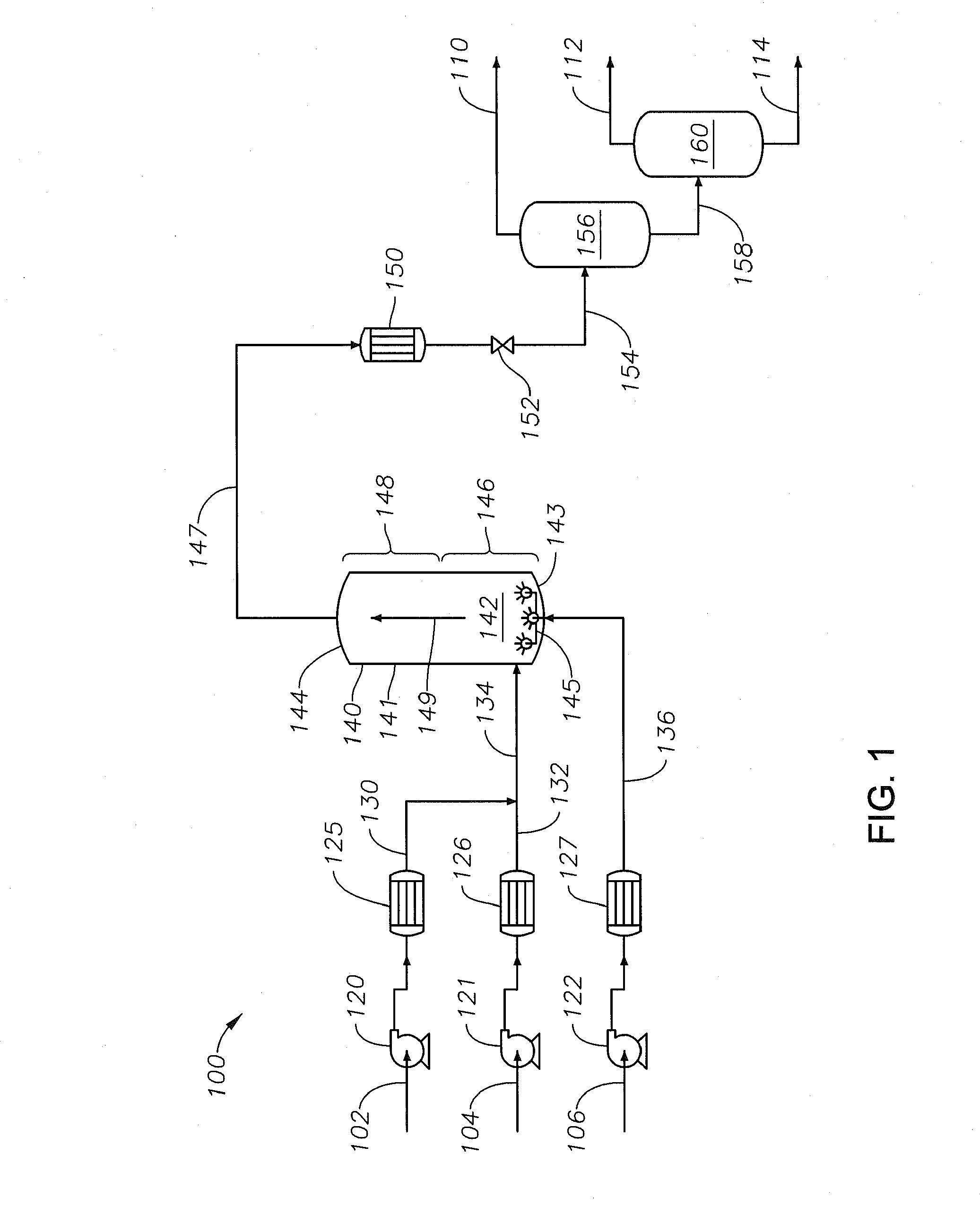Production of upgraded petroleum by supercritical water
a technology of supercritical water and petroleum, which is applied in the direction of supercritical condition process, chemical production, separation process, etc., can solve the problems of ineffective thermal process removal of sulfur and nitrogen heteroatom species, large amount of hydrogen required and catalyst amount, and relatively easy deactivation, etc., to achieve long residence time, prolong exposure, and prolong the effect of tim
- Summary
- Abstract
- Description
- Claims
- Application Information
AI Technical Summary
Benefits of technology
Problems solved by technology
Method used
Image
Examples
example 1
[0100]For Example 1 and Comparative Example 1, a supercritical water petroleum upgrading system configuration similar to FIG. 1 is used. In reference to the properties of the streams for Example 1 and Comparison Example 1, the description and stream numbers for FIG. 1 are used. For Example 1, supercritical water reactor 140 receives the contents of both mixed stream 134 and pre-heated auxiliary feedstock line 136. For Comparative Example 1, however, supercritical water reactor 140 receives the content of mixed stream 134 but does not receive the contents of pre-heated auxiliary feedstock line 136. Except for not introducing the auxiliary feedstock as part of the process of Comparative Example 1, all other operational aspects of the processes between Example 1 and Comparative Example 1 are comparable.
[0101]For both Example 1 and Comparative Example 1, whole range Arabian heavy crude oil is introduced into the respective systems at a flow rate of about 20,000 barrels per day at standa...
example 2
[0107]For Example 2 and Comparative Example 2, a supercritical water petroleum upgrading system configuration similar to FIG. 3 is used. The system uses two reactors coupled in series: an upflowing reactor and a downflowing reactor. An intermediary line couples the upflowing and downflowing reactors such that the intermediary product passing from the top of the upflowing reactor transfers into the top of the downflowing reactor. The reactor product stream at the bottom of the downflowing reactor passes the product of the series of reactors. The volume of each reactor is about 1 Liter (L). Both the upflowing and downflowing reactors are maintained at an operating temperature of about 420° C. and an operating pressure of about 3,600 psig using pressure-relief devices.
[0108]For both Example 2 and Comparative Example 2, the mixed stream introduced into the bottom of the first upflowing supercritical water reactor is made by continuously blending 0.6 L / hr of Arabian heavy crude oil and 1...
PUM
| Property | Measurement | Unit |
|---|---|---|
| temperature | aaaaa | aaaaa |
| temperature | aaaaa | aaaaa |
| temperature | aaaaa | aaaaa |
Abstract
Description
Claims
Application Information
 Login to View More
Login to View More - R&D
- Intellectual Property
- Life Sciences
- Materials
- Tech Scout
- Unparalleled Data Quality
- Higher Quality Content
- 60% Fewer Hallucinations
Browse by: Latest US Patents, China's latest patents, Technical Efficacy Thesaurus, Application Domain, Technology Topic, Popular Technical Reports.
© 2025 PatSnap. All rights reserved.Legal|Privacy policy|Modern Slavery Act Transparency Statement|Sitemap|About US| Contact US: help@patsnap.com



